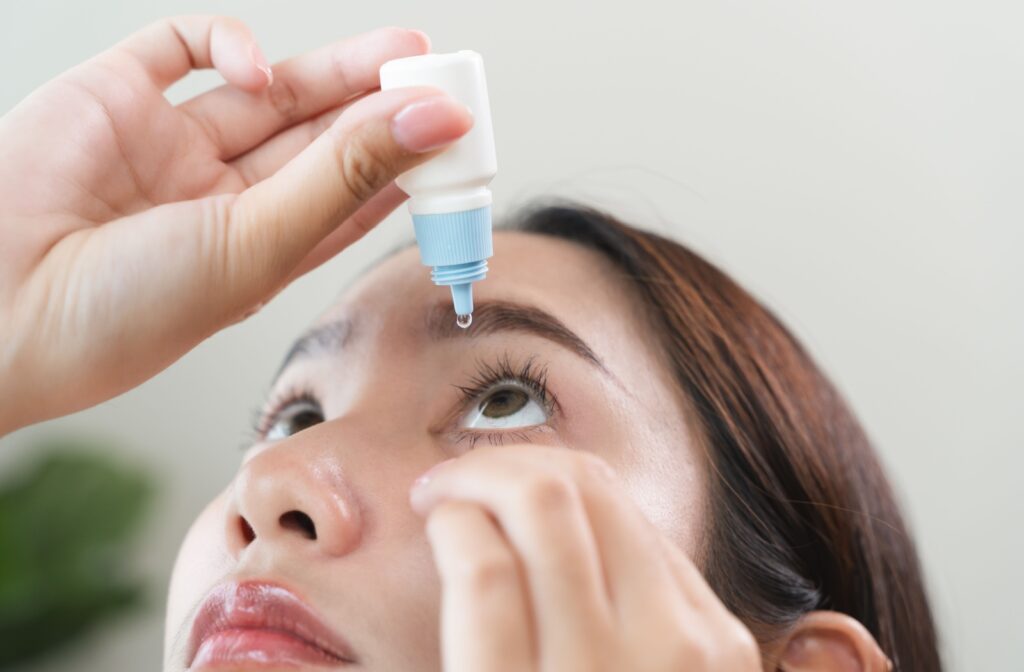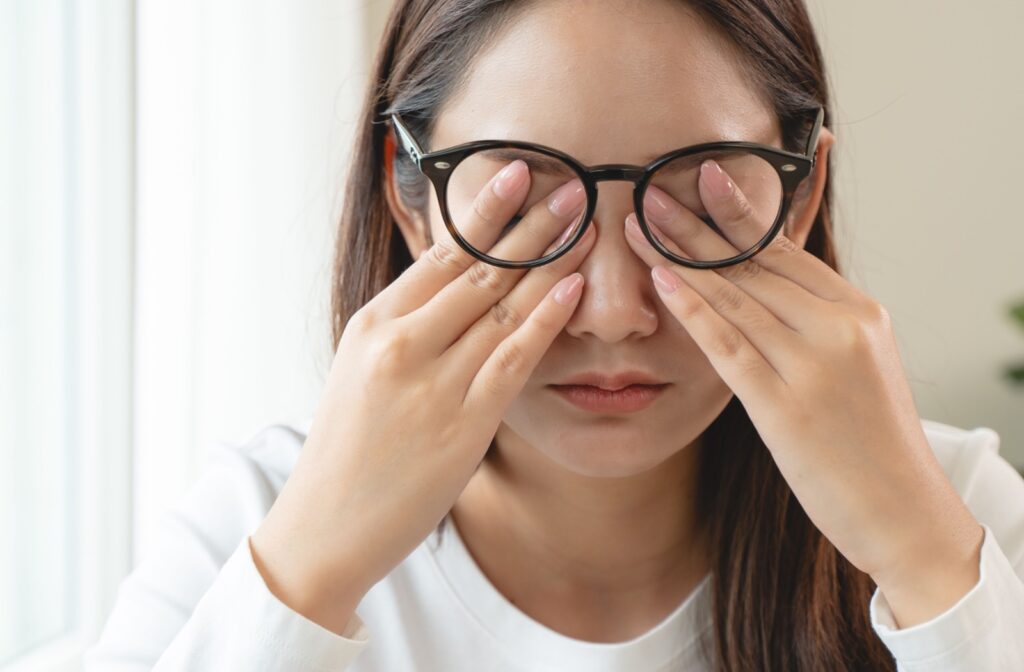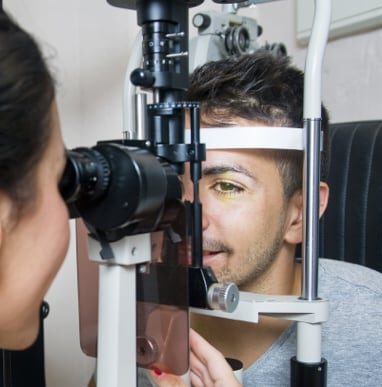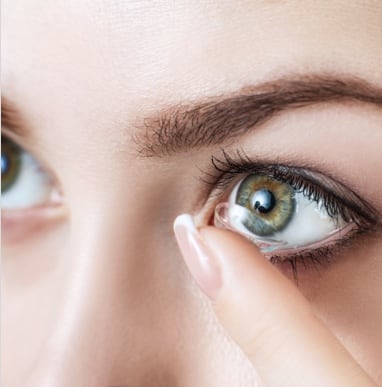Dry eye syndrome is a condition that affects millions of people worldwide. It occurs when your eyes don’t produce enough tears or when the tears evaporate too quickly. This can lead to a variety of symptoms, including irritation, redness, and discomfort.
One question that often arises is whether dry eye can cause blurry vision. Yes, dry eye can cause blurry vision, but what surprising factors might be contributing to this condition?
It is important to consult an eye care professional at Vision Care Center for proper diagnosis and treatment, as well as providing practical tips for managing dry eye symptoms.
The Relationship Between Dry Eye & Blurry Vision
Blurry vision is indeed one of the common symptoms associated with dry eye syndrome. When your eyes lack adequate lubrication, the surface of the eye can become inflamed and irritated.
This inflammation often leads to an uneven tear film, which is important for maintaining clear vision. The tear film is the first layer of the eye that light passes through, and any disruptions can cause light to scatter, resulting in blurry vision.
Causes of Dry Eye Syndrome
Several factors can contribute to the development of dry eye syndrome:
- Age: As we age, tear production tends to decrease. People over the age of 50 are more likely to experience dry eyes.
- Medical Conditions: Conditions such as rheumatoid arthritis, diabetes, and thyroid problems are linked to dry eye syndrome.
- Environmental Factors: Exposure to wind, smoke, or dry air can exacerbate dry eye symptoms.
- Medications: Certain medications, including antihistamines, decongestants, and antidepressants, can reduce tear production.
- Screen Time: Prolonged use of screens can reduce blinking rates, leading to quicker evaporation of tears.
Symptoms of Dry Eye
Dry eye syndrome presents a range of symptoms, which can vary from person to person. Common symptoms include:
- Blurry Vision: As mentioned, an uneven tear film can cause light to scatter, leading to intermittent blurry vision.
- Redness: Inflammation and irritation can make the eyes appear red.
- Burning Sensation: Many people with dry eye experience a burning or stinging sensation.
- Sensitivity to Light: Bright lights can become uncomfortable.
- Watery Eyes: Surprisingly, dry eye can cause watery eyes as the body tries to compensate for the lack of moisture.
Importance of Consulting Eye Care Professionals
If you experience any symptoms of dry eye, make sure to consult an eye care professional. They can provide a thorough examination to determine the underlying cause of your symptoms and recommend appropriate treatments.
At Vision Care Center, our eye doctors offer comprehensive eye exams and specialized dry eye therapy to help manage and alleviate symptoms.
During your comprehensive eye exam, the doctor will review your full health history to identify potential causes and conduct a swift scan with an Oculus Keratograph 5M. This advanced device helps to evaluate the condition of your tear film, determine the rate of tear evaporation, and capture detailed images of your eyes and meibomian glands.

Treatment Options for Dry Eye
Treatment for dry eye syndrome varies depending on the severity and underlying cause of the condition. Some common treatments include:
- Artificial Tears: Over-the-counter artificial tears can provide temporary relief by adding moisture to the eyes.
- Prescription Medications: Your eye doctor may prescribe medications to reduce inflammation and increase tear production.
- Punctal Plugs: These tiny devices are inserted into the tear ducts to reduce tear drainage, keeping the eyes more moist.
- Lipid-Based Eye Drops: These are particularly effective for people whose dry eye is caused by meibomian gland dysfunction.
- Lifestyle Changes: Simple changes, such as taking frequent breaks from screens, using a humidifier, and wearing sunglasses to protect against wind and sun, can make a significant difference.
Practical Tips for Managing Dry Eye Symptoms
Practical tips for managing dry eye include keeping hydrated to support natural tear production, remembering to blink frequently, especially during screen time, to help maintain eye moisture, and using a humidifier can be beneficial as increasing air moisture helps prevent your eyes from drying out.
Additionally, protect your eyes by wearing sunglasses to shield them from wind, dust, and UV rays. Modifying your diet can also make a difference; incorporate omega-3 rich foods like salmon, flaxseeds, and walnuts to enhance tear quality. Lastly, maintain eyelid hygiene by regularly cleaning your eyelids to reduce the risk of inflammation and infections.
Managing Dry Eye for a Brighter Tomorrow
Dry eye syndrome is a common condition that can cause a variety of uncomfortable symptoms, including blurry vision. Understanding the relationship between dry eye and blurry vision is crucial for managing the condition effectively. If you are experiencing symptoms of dry eye, it’s a smart idea to consult an eye care professional for a proper diagnosis and personalized treatment plan.
At Vision Care Center, our team is dedicated to providing exceptional care and helping you achieve clear, comfortable vision. By following practical tips and seeking professional advice, you can manage your dry eye symptoms and improve your overall eye health.
Take the first step towards clear, comfortable vision today. Book your comprehensive eye exam or dry eye therapy appointment at Vision Care Center. Our experienced eye care professionals are dedicated to your eye health and well-being. Don’t wait—schedule your appointment now and see the world more clearly!












